According to a recent study from Harvard Business Review, 73% of 46,000 respondents use multiple channels … and are worth more by every conceivable metric. Google’s research shows that 85% of holiday shoppers “will shop for a gift by starting on one device and finishing on another.”
Decades-old retailers are now boasting double-digit sales and profits thanks to multi-channel marketing. And ecommerce retailers are bridging the online-to-offline (O2O) divide, creating three-dimensional brand experiences with pop-ups and launching “click-and-mortar” style showrooms in the real world.
But for all the promise of this new reality brings, there’s one crucial detail everyone seems to skip when discussing it:
Multi-channel management is a pain.
That said, if you’re a “risk is worth the reward” kind of person, or you’re ready to take it up to the next level, this article was written to help give you a starting place to wrap your head around creating your own multi-channel management strategy.
Are you selling everywhere your customers buy?
For an executive look at the present and future of commerce, download The Enterprise Guide to Multi-Channel Ecommerce.
Inside, you’ll get one-pagers detailing …
- Comprehensive data on the opportunities and threats
- Merchant spotlights for insights on top channels
- A checklist for selecting the right multi-channel platform
However, before we get into the step by step …
What is Multi-Channel Management?
Multi-channel management is the art and science behind decoding the subtle nuances of who, what, where, when and why people are buying from you on each individual channel you sell your products on.
It’s about creating balance, and understanding when and where to amplify and show restraint throughout your channel mix, so you won’t overwhelm your following or burn your marketing dollars trying to convert people when they’re not interested.
It’s about finding opportunities in your data and implementing creative or budget changes to capitalize when the opportunity arises.
And it’s about running reports at a minimum of once or twice a month, depending on your volume, and learning which channels are performing most effectively and why.
Multi-channel ecommerce is not for the faint of heart, but with the steps outlined in this piece, you’ll understand how to break down the data found in each of those channels and use those insights to make each channel a more predictable, profit-generating machine.
1. Take Inventory of Top Performing Channels
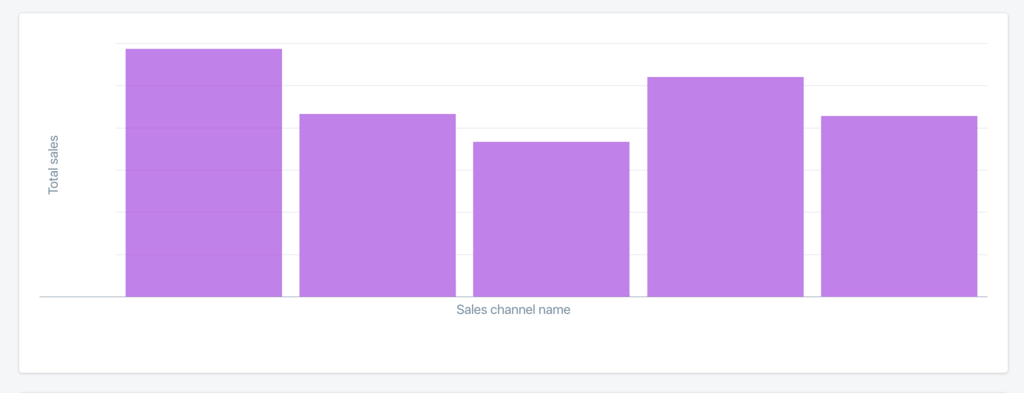
Managing multi-channel ecommerce starts with understanding which channels are actually performing well, relative to themselves and to their counterparts.
The goal isn’t just to understand which channels generate the most sales relative to their reach, but which channels attract customers with highest lifetime value, show the most promise given the time and attention currently being spent.
Ultimately, the intent is to better prioritize your time, budget, and creative energy to drive the most impact from each channel.
Fortunately, on Shopify, each of your channels are readily visible through the Admin panel, where you can navigate to Reports and view Sales by Channel, allowing you to broadly see how your products are performing on Pinterest (Buyable Pins), Facebook (Shop), Amazon, eBay, BuzzFeed and more.
But more importantly, you can track metrics from each of these channels closely and see how they’re performing in relation to each other.
If you want a high-level overview of how each channel performs over time, you’ll want to export your channel data to excel and create a multi-line chart to see how each channel performs against each other over time.
If you were measuring orders/channel over a six month period, your chart may end up looking something like this.
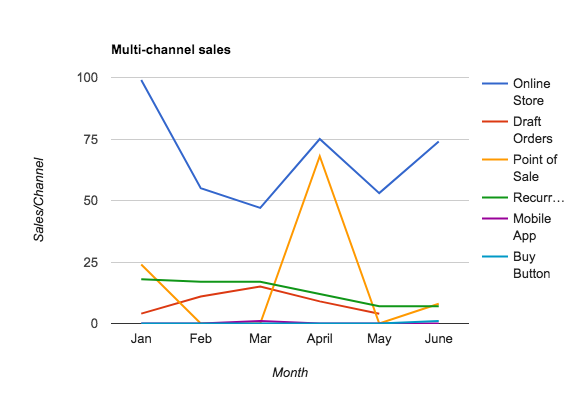
This bird’s eye view makes it easy to see a few things and ask a few questions:
- POS presents an interesting opportunity and may impact on online sales (worth exploring)
- Recurring revenue orders are dropping (are there enough repeat purchasers to warrant a subscription campaign?)
- Draft Orders provide an interesting opportunity (maybe an opportunity for more b2b ecommerce?)
- Buy Button & Mobile App aren’t taking off (pivot or give more effort?)
Note: If you’re unsure of how to make a multi-line graph in Excel, watch the video below for a pretty straightforward method of converting your data to this format.
During step 1, you’re using these high-level reports to guide what questions you’re asking of your data to plan your next strategic move.
With every new graph you create - from net sales, to order values, to return rates and discount usage - new insights will emerge, and often, compel you to dig deeper.

2. Look for Trends in Sales Patterns
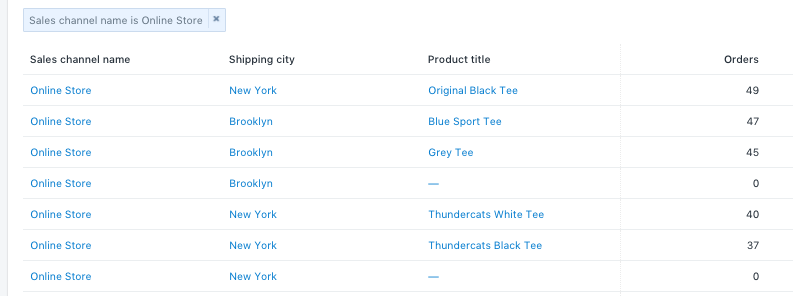
Once you know from a high-level which channels are performing, you’ll want to dig deeper and see what performs well, where and why.
Analysis is a grind, but it is fundamental to any solid multi-channel management strategy.
It means taking the time to understand potential causations and why certain things happen, and developing forecasting abilities and the ability to make “happy accidents” or successful experiments more consistent.
For example, does the unexpected spike in your website traffic correlate with your pop-up shop, or the introduction of the Buyable Pins channel to your mix? Is there a relationship between buyer geography and sales channel? Are buyers from one channel more likely to re-purchase or have a higher order value?
Any amount of data is useless without critical analysis. When your team digs deep into the data, seek out the correlations and causations and understand the why behind a certain data point. For example, we’d talked about wanting to figure out channels that create the highest average order value…
You could make that happen by looking at the sets of customers that signed up through a specific channel and looking exclusively at the order value of each channel.
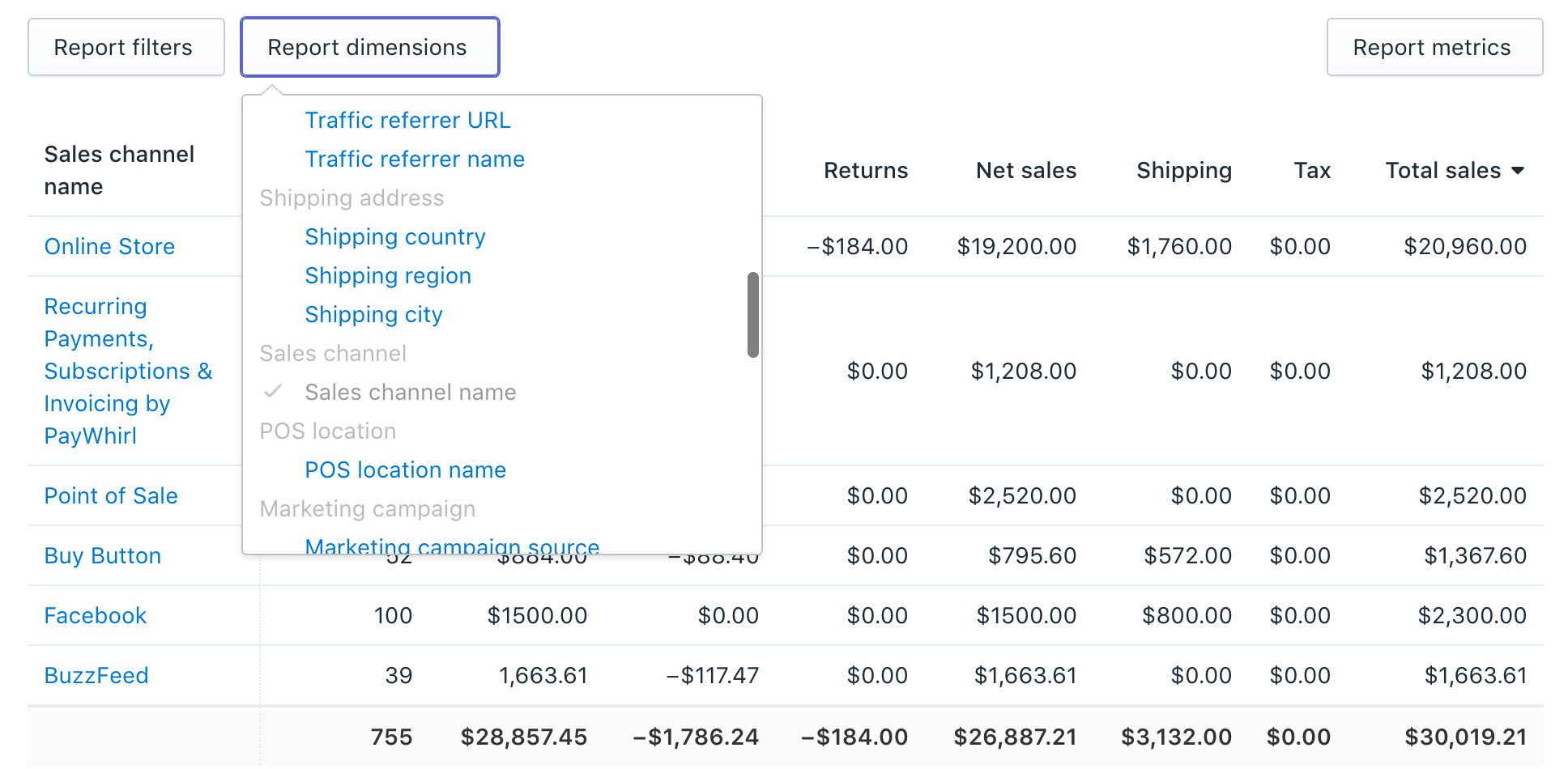
In this instance, we can see that Draft Orders commands the highest order value, despite having just under a third of the order volume.
Is this solely because of the advantages of b2b ecommerce? Or are there trends in where these Draft Orders are coming from?

Ontario is a large province in Canada, however, using this information, you may decide to increase the visibility of your B2B marketing and sales efforts exclusively in the small towns between Toronto, Ottawa, and Waterloo to concentrate your efforts, and improve Draft Order sales.
This, however, is just one example of the kinds of insights you may get by going one level deeper.
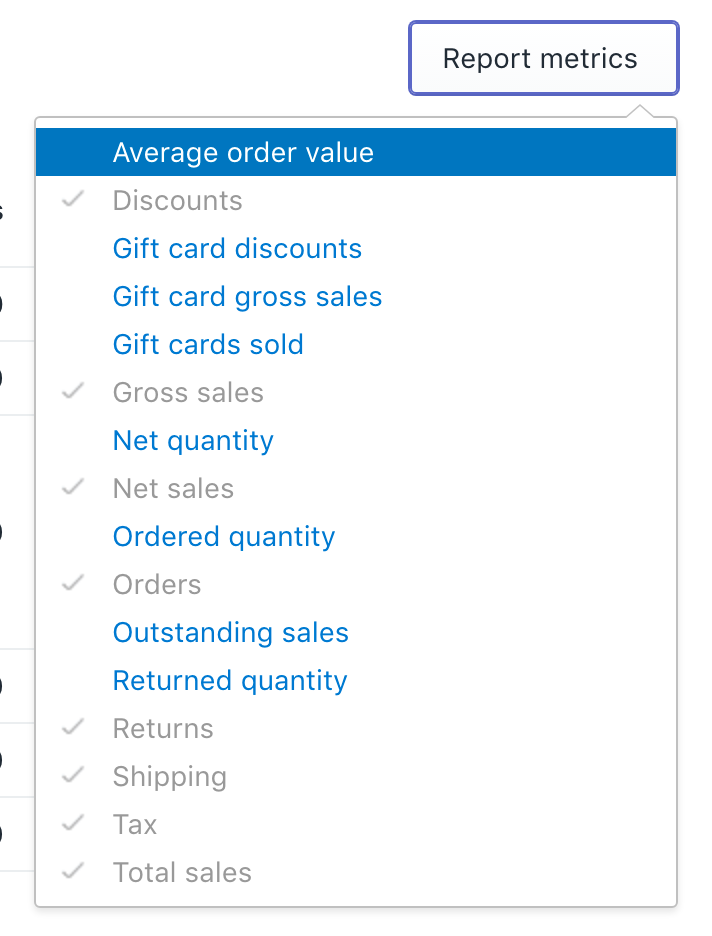
Imagine if you ran a business selling t-shirts, and held the channel variable constant, but started pairing other variables together. This includes:
- Channel vs. products sold: For example, you notice that TV-show parody t-shirts sell very well across all channels. You want to drive more traffic back to your website from the other channels, should you host these TV-show parody t-shirts exclusively at your website? Is it compelling enough to drive people back, in order to pass up the potential sales gained from other channels?
- Channel vs. geographic locations: Cartoon parody t-shirts sell particularly well in Waterloo, Ontario, but not so great anywhere else. Why? And should you create or source more cartoon products that are Canada-themed?
- Channel vs. order/reorder frequency: Customers purchasing through Buyable Pins come and go, but customers buying from your website tend to return within six months. Can you bring Buyable Pins customers to your website, or follow up with them more effectively some other way?
- Channel vs. average order value: Customers buying at your website consistently spend a decent amount, but for some reason, the few purchases through Facebook Shops are huge orders. Why?

This means finding out how visitors, buyers, and customers behave at different channels. This understanding will lead to greater marketing and sales results.
3. Analyze and Set Key Performance Indicators For Each Channel
You’ve figured out the best performing channels for sales and your other objectives. It’s time to establish a baseline on key performance indicators that will guide how your team executes.
Continuing on the above example, let’s say Draft Orders as a channel was responsible for an average of 20 sales per month, originating from the Ontario area with an average order value of 176.16 or an average of $3,522/month.
After doing some quick research, you realize there’s more than 2 dozen potential buyers by way of local retailers, just between Toronto and Waterloo.
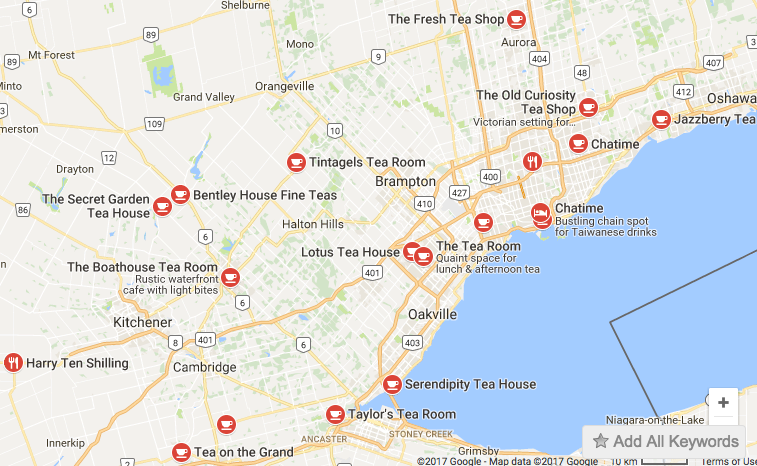
Understanding that your baseline was virtually no work for 20 sales a month to get an AOV of $176.17, could investing 5 hours a week cold-calling secure more new business at the same or higher average order value?
If so, should you continue fleshing out the B2B sections of your website, to make it more accessible for retail partners interested in partnering?
Is it worth hiring a salesperson to travel the region and continue growing the channel? While we’ll discuss prioritization a little further in the next section, the point of establishing your baselines and KPIs per channel is to orient all of your goal setting, planning, and forecasting around beating the KPI that’s in place.
This may vary from channel to channel and quarter to quarter, but it’s always about working toward clear goals based off of real information.
For example, let’s say your team’s goal for the upcoming year is to expand internationally.
While your advertising efforts are performing well, you notice in your channel reports that Facebook generated a disproportionately high volume of international sales for the amount of exposure it received.
Upon digging deeper, following the ideas in Step 2, you notice there’s a high-degree of international orders, and realize “It’s because Facebook translates and localizes information extremely precisely, and we haven’t done multi-language on our own site!”
A-hah!
After you establish the baseline performance, you can refocus your advertising and double down on Facebook with sharper targeting parameters, this time with targeted language and creative, and see if that beats the existing KPI.
Because this information doesn’t live in a silo, it may also be used to see how foreign language versions of your website and other sales properties might fare using the buyer’s native language.
In any case, the data surfaced a very simple insight that could have been easily missed. This insight from a channel could affect how your other channels perform, and how well each one converts visitors into buyers, and buyers into customers.
4. Prioritize and Plan What Comes Next
With all the analysis, and all the observations and changes you can make amidst your operational tasks — you now have a tough decision ahead of you:
How do you prioritize these changes?
WiderFunnel CEO Chris Goward shares a very useful three-factor framework for deciding which of these changes are the most important during conversion optimization testing; however, the principles of this prioritization framework hold up very well for multi-channel management as well:
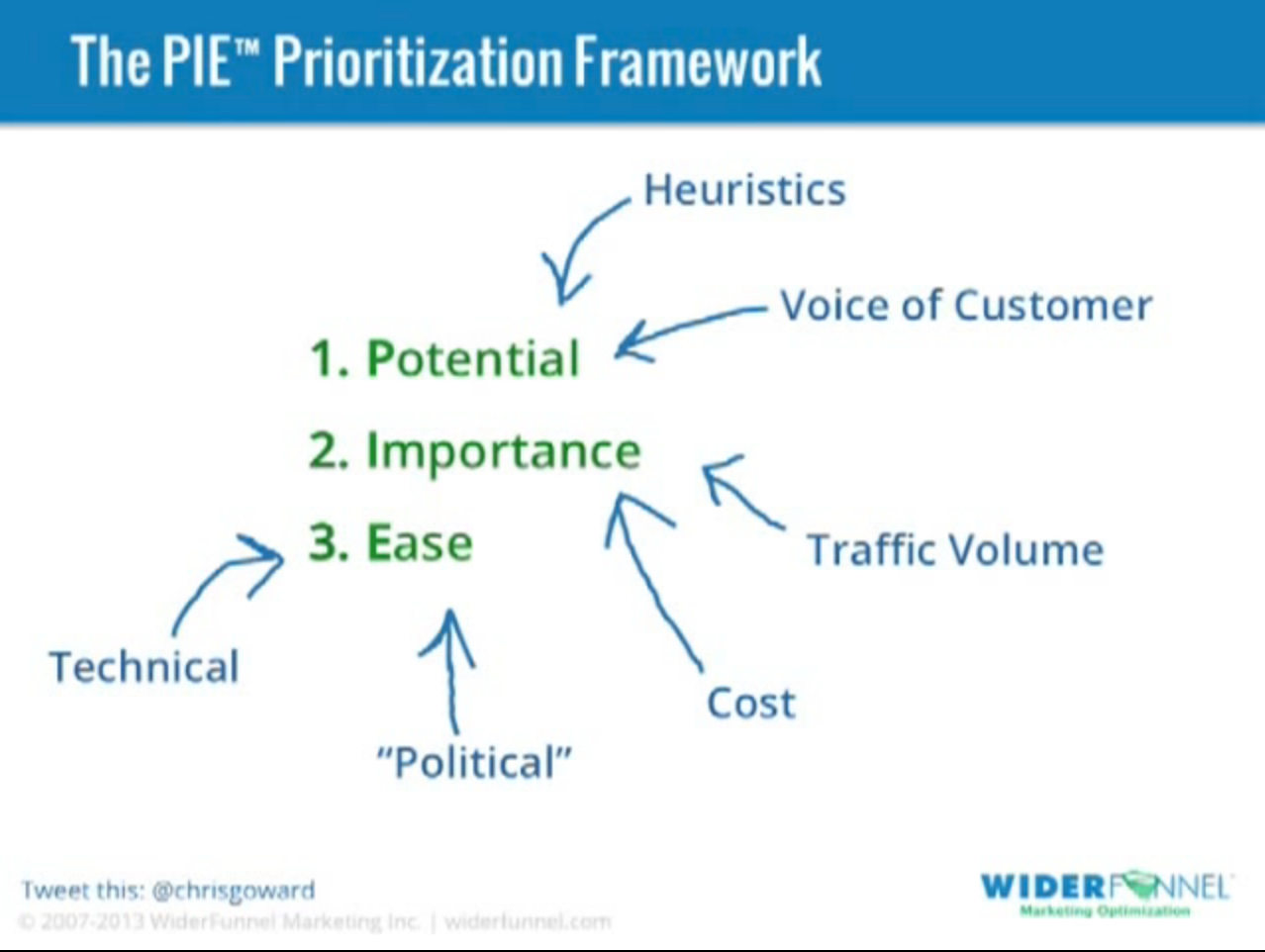
Potential: Prioritize channels or products that are significantly underperforming, with the most potential for upside. Goward writes, “This should take into account your web analytics data, customer data and expert heuristic analysis of user scenarios.”
This should also include any analytics provided by the individual channel such as Facebook insights, Pinterest Analytics, etc.: e.g., Do specific products sell better on different channels? Would a simple recalibration of where we spend our money create a huge impact?
Importance: The channels with the most visitors, and most expensive acquisition costs. “You may have identified pages that perform terribly, but if they don’t have significant volume of costly traffic, they aren’t testing priorities.”
e.g., If your website requires costly ads to drive traffic but converts reasonably well, keep those pages high-priority. If however there are channels that use little money but also convert well, prioritize those for an experiment of increasing budget.
Ease: Prioritize changes that won’t take as long to implement changes on. “The less time and resources you need to invest for the same return, the better. This includes both technical and “political” ease.”
e.g., The home page might be the most popular page on your website, but it’s also got the most stakeholders and people invested in it. Trying to implement a change on the home page could. However, if a test on Facebook or Pinterest requires less input from others, and assets that are easily accessible, make that a higher priority. It may not be as glorious as a big change to the homepage, but if you can easily implement five minor changes that drive major results, with minor headaches, isn't that worth it?
While your decisions shouldn’t be purely quantity-driven, you can use these factors as guides. Weigh each of these factors evenly to generate a score out of 10, and prioritize your changes according to the highest scores.

Are you selling everywhere your customers buy?
For an executive look at the present and future of commerce, download The Enterprise Guide to Multi-Channel Ecommerce.
Inside, you’ll get one-pagers detailing …
- Comprehensive data on the opportunities and threats
- Merchant spotlights for insights on top channels
- A checklist for selecting the right multi-channel platform
Final Thoughts on Your Multi-Channel Management Strategy
Selling on multiple channels is a natural evolution of any business, but it takes a special type of system to manage multi-channel seamlessly and to have the adaptability to keep up with change, and sell directly on Facebook, Pinterest, Twitter, BuzzFeed, eBay, Amazon, and your website.
You’ll also need this one system to manage pricing, product descriptions, and a lot of other information — and integration into all your other management software. Eventually, this system should be the first step to an even more powerful system — one that expands into a larger promise and vision enabling customers to buy anything, anywhere.
Your system needs to have stability, adaptability, and — most importantly — reliability. There can not be any compromises. This sort of thing isn’t easy to build on your own. Keep doing what you do best — and let Shopify do what it does best.
Read more
- Artificial Intelligence: Armageddon or Nirvana? Experts Predict What Happens Next
- Brand Loyalty in Ecommerce: Why and How Communities Are Key to Long-Term, Multi-Million Dollar Success
- How I Raised $1.1 Million Without a Network or Experience
- 14 Video Ads That Blew Our Minds In 2015
- Back-to-School Ecommerce: Infographic & Lessons from $58.1B in Online Sales
- Reimagining Racial Equity in the Fashion Industry




